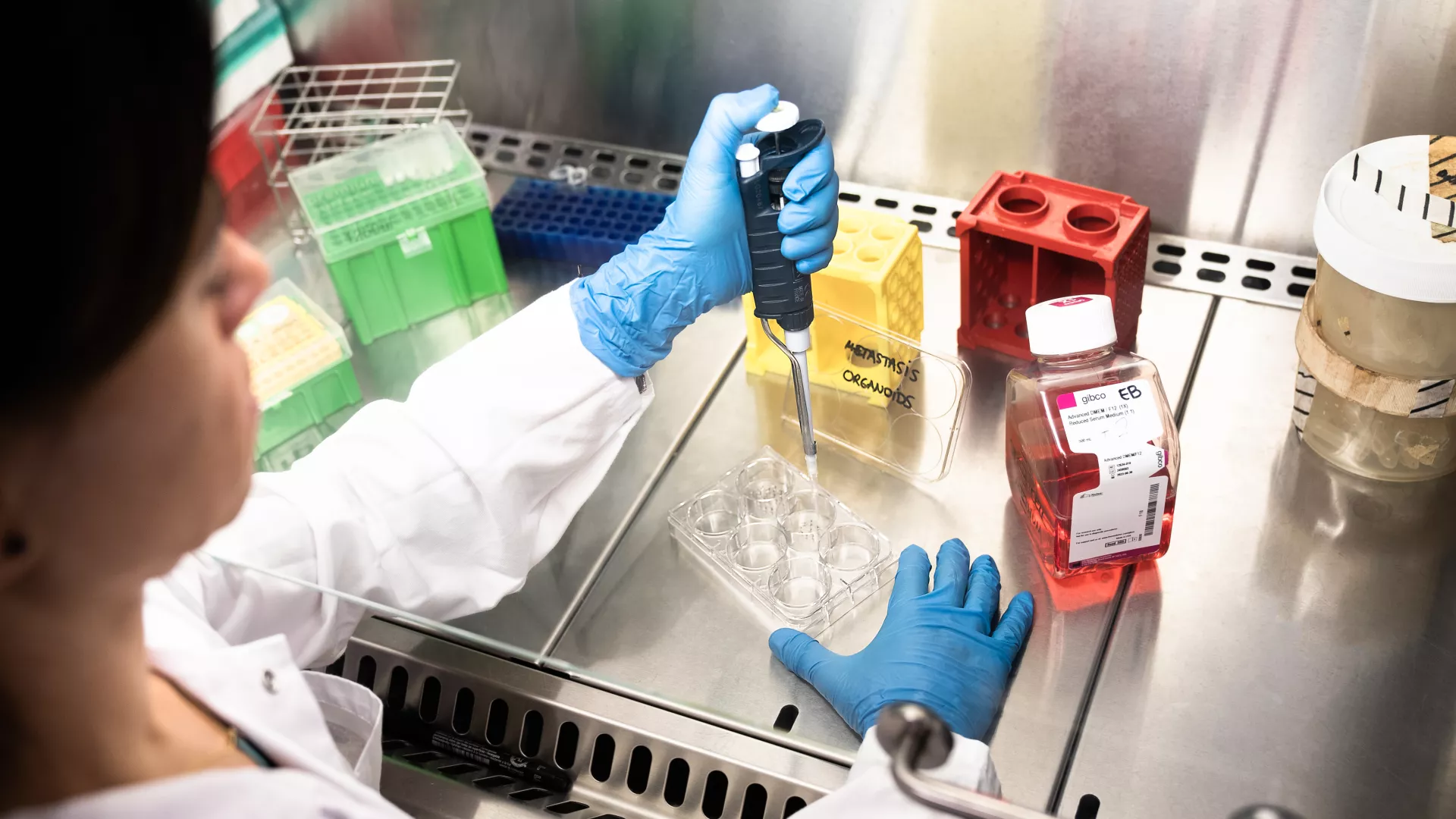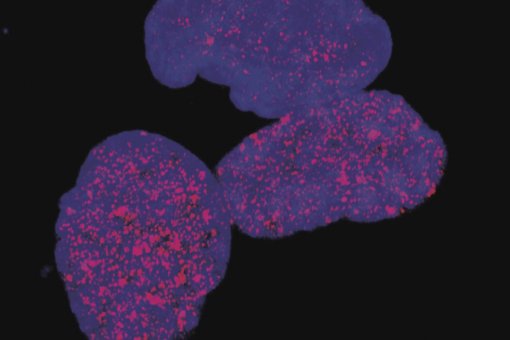Images
Contact

The Nek9 protein is required for chromosomes to separate into two identical groups.
Nek9 exerts its action between two molecules of interest for the pharmaceutical industry as anti-tumoral agents, and for which inhibitors are already in advanced stages of clinical trials. Nek9 could be added to the list of candidates.
A study by the Institute for Research in Biomedicine (IRB Barcelona) and the Center for Genomic Regulation (acronym in Catalan CRG) highlights the protein Nek9 as a decisive factor in cell division, a fundamental process for both the development of an organism and tissue maintenance. Headed by the researchers Joan Roig at IRB Barcelona and Isabelle Vernos at the CRG, the study describes that Nek9 is required for a cell to be able to divide the chromosomes into two identical groups in order to ensure efficient and accurate cell division. In fact, errors in the correct distribution of chromosomes cause many spontaneous miscarriages, some genetic defects such as trisomies, and are also related to the development of tumours.
“Through this study we demonstrate that a fourth family of proteins, namely NIMA and specifically Nek9, exert functions in cell division as important as those undertaken by the widely studied CDK (cdk1), Polo (Plk1) and Aurora (Aurora A and B) kinases”, explains the scientist Joan Roig, specialist in the NIMA protein family and co-discoverer of Nek9.
The scientists study cell division and more specifically the first stages of mitosis or the process of the cell nucleus dividing in half. The distribution of the chromosomes requires the development of machinery that separates the two copies of the genetic material in such a way that the two resulting cells from the division inherit the same content. Nek9 participates in the preparation of the centrosomes, organelles involved in the organization of mitotic spindle development, a kind of “rugby ball” made up of microtubules or “molecular wiring”, which, together with several “motors” pull and separate the chromosomes into two identical groups. The study reports that Nek9 modifies and controls NEDD1, the function of which was discovered in 2006 by Jens Luders, a researcher at IRB Barcelona, and a molecule involved in the formation of the new microtubules required to prepare the mitotic spindle. “Without Nek9 the spindle would not form properly and cell division would be hindered, the cells would die or cause aneuploidies, with unequal distribution of chromosomes, an event that is common in tumours”, explains Isabelle Vernos, an expert in microtubules and cell division.
Interference with cell division is one of the main strategies used against cancer and the pharmaceutical industry is currently testing new drugs that inhibit Plk1, Aurora and Eg5. Nek9 falls between Plk1 and Eg5, the latter being a motor protein, whose function in mitosis Roig contributed to elucidate in a previous study. “We are doing double-edged work: we describe how proteins involved in the initial stages of cell division are related in time and space and in parallel we highlight the possible therapeutic tools, whether markers of disease or anti-mitotic agents, that can stop division and tumour growth”, says Roig.
Conducted using eggs from the frog Xenopus laevis and human cells, the study is published today in Current Biology, one of the main journals devoted to basic biology.
Reference article
Nek9 Phosphorylation of NEDD1/GCP-WD Contributes to Plk1 Control of γ-Tubulin Recruitment to the Mitotic Centrosome.
Sdelci S, Schütz M, Pinyol R, Bertran MT, Regué L, Caelles C, Vernos I, Roig J.
Curr Biol. 22, 1-8, August 21, 2012.
http://dx.doi.org/10.1016/j.cub.2012.06.027
About IRB Barcelona
The Institute for Research in Biomedicine (IRB Barcelona) pursues a society free of disease. To this end, it conducts multidisciplinary research of excellence to cure cancer and other diseases linked to ageing. It establishes technology transfer agreements with the pharmaceutical industry and major hospitals to bring research results closer to society, and organises a range of science outreach activities to engage the public in an open dialogue. IRB Barcelona is an international centre that hosts 400 researchers and more than 30 nationalities. Recognised as a Severo Ochoa Centre of Excellence since 2011, IRB Barcelona is a CERCA centre and member of the Barcelona Institute of Science and Technology (BIST).




